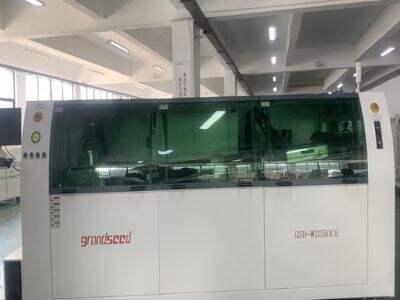You know how you use small electronic devices every single day like your phone or tablet? The manufacturing of such devices involves a large part known as printed circuit board (PCB) manufacturing. PCBs are the boards that hold all the tiny electronic parts that power your devices. These conducts of all the parts together so that everything can communicate and function correctly.
Previously, the components were mounted on the boards using Through-Hole Technology (THT). It consisted of drilling holes in the PCB and inserting the elements through those holes. After that, the parts were soldered to board, that is joined to the board through melted metal. While THT was functional, it was slow and laborious. However, with time, a quicker and an improved technique is introduced: Surface Mount Technology (SMT).
What Is Surface Mount Technology?
SMT parts are attached directly to the surface of the PCB rather than through holes. This also greatly speeds up how quickly and easily the parts get laid up onto the boards. It also means that smaller components can be used, helping to make devices smaller and lighter. Because the parts are on the surface, manufacturers can cram more components into the board, leading to more powerful and more efficient electronic devices.
Why Change to SMT?
Many new improvements in how PCBs are made emerged from the transition to SMT. The primary catalyst for these transitions is customer demand for smaller, cheaper and better products. We all want devices that can do more and take up less space, and cost less.
To meet this need, many companies today use machines to assist in the production of PCBs. These machines can now place parts on the boards and do so quickly and accurately. They also look for issues to ensure all PCBs are made in the same way. This helps ensure that all devices will run properly and consistently.
How Do Machines Help?
Placement machine is one of the important machines used in PCB manufacturing. Issue: This machine is capable of putting and picking products so quick that it helps in more fast production. The reflow oven is another key machine. This oven cures the parts and makes them stick to the board well.
Most companies have the option to implement the best machine in the market in order to stay ahead of their competitors. This allows them to be more efficient and accurate while cutting costs on labor. And the latest machines can even correct errors on their own! It means that if something goes wrong with production, the machines can fix it immediately, producing less errors and better products.
New Materials for PCBs
Besides better machines, many companies experiment with new materials and processes to enhance their PCBs. A new and exciting material is flexible PCB (FPCB). So board, bend board and flex board, this one bends and flexes to fit into the smaller space. Manufacturers are using FPCBs to fabricate even smaller and more functional devices. This is particularly valuable for devices that must be small, such as wearables, or other portable electronic devices.
Silver epoxy is another newer material being utilized. It can be used in such thin layer that creates strong amount of efficient circuit. Thin layers save space and enable more complex designs. Methods such as laser drilling are being utilized to develop PCB designs that are increasingly small and intricate. These technical improvements allow manufacturers to produce better products that can do more things than ever before.
Trends in PCB Manufacturing
However, there are new trends in PCB manufacturing as technology evolves. One huge trend is a shift toward more sustainable production methods. This means that companies are working to create things in a more environmentally friendly way. They are beginning to utilize recycled materials and are working on reduction of waste (water and chemicals). The reason being that it is light end, which is good for the environment without sacrificing quality.
AI circuitry and its incorporation in PCB manufacturing is another growing trend. AI can help optimize the assembly of the parts by analyzing data collected from sensors and cameras. It can even anticipate risks ahead of time, thereby minimizing errors and making the production process more seamless.
As we can see, there are a lot of exciting changes going on in PCB manufacturing. This is SHENZHEN GRANDSEED TECHNOLOGY DEVELOPMENT with the latest engineering gadgets. Our goal is to provide our customers the best quality PCBs they can get. We are confident that by bringing in new machines, materials, and techniques, we can deliver the repeat sales that our customers require, right the way through to new products of the future.
 EN
EN
 AR
AR
 BG
BG
 HR
HR
 CS
CS
 DA
DA
 NL
NL
 FI
FI
 FR
FR
 DE
DE
 HI
HI
 IT
IT
 JA
JA
 KO
KO
 PL
PL
 PT
PT
 RU
RU
 ES
ES
 SV
SV
 TL
TL
 ID
ID
 LT
LT
 SR
SR
 SK
SK
 VI
VI
 HU
HU
 TH
TH
 TR
TR
 AF
AF
 MS
MS
 BE
BE
 MK
MK
 AZ
AZ
 BN
BN
 LA
LA
 MN
MN
 NE
NE
 TA
TA
 UZ
UZ
 XH
XH

/images/share.png)
